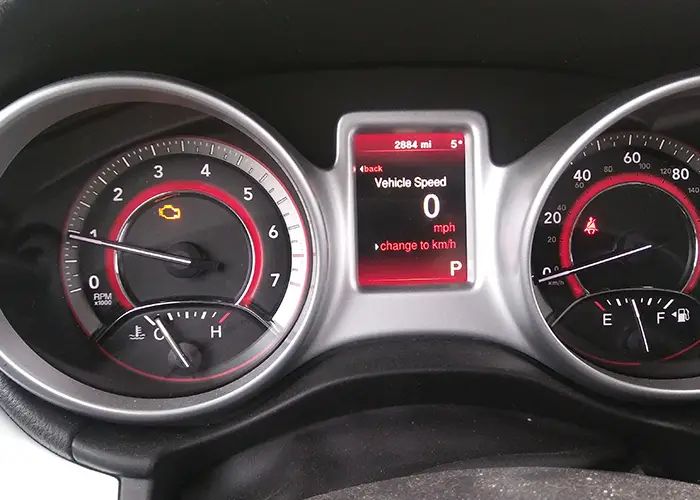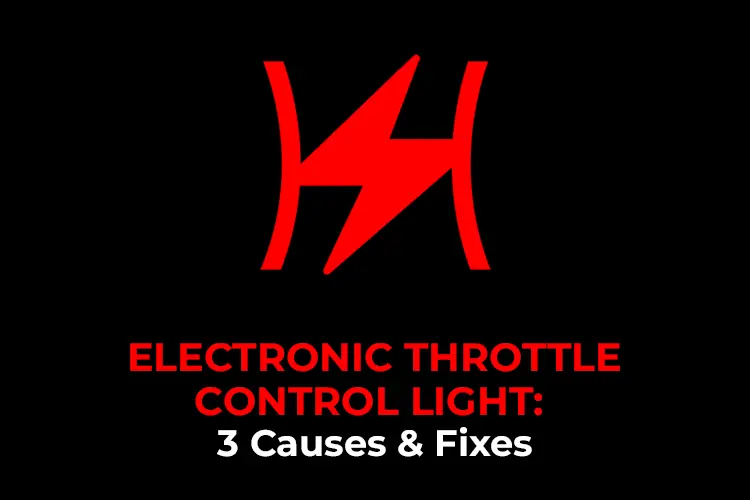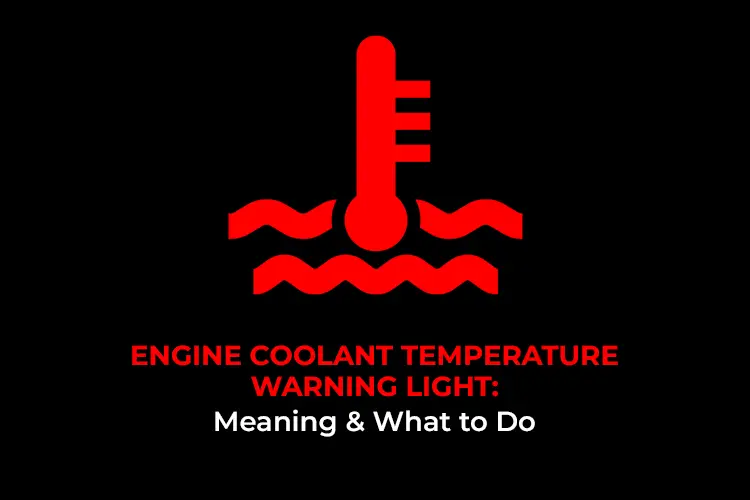Ever had that moment when the check engine light unexpectedly flickers in your Dodge? You’re not alone.
Buckle up as I will uncover its secrets, figure out what makes it tick, and equip you with the ultimate tip to face this situation head-on.
Ready? Let’s roll!
What Does the Check Engine Light Mean on a Dodge?

On Dodge vehicles, the Check Engine light (CEL) is also referred to as the “Malfunction Indicator Lamp” (MIL). It indicates that the vehicle’s onboard diagnostic system (OBD-II) has identified a potential engine or emissions system issue.
The interpretation of the check engine light’s status varies depending on whether it’s illuminated steadily or flashing.
If the CEL remains illuminated, it indicates a potential issue with the engine or emissions system. On occasion, a solid check engine light might be triggered by a relatively minor issue, such as an improperly secured gas cap, a faulty sensor, or a minor emissions-related problem.
If the check engine light is blinking, it alerts serious conditions that could lead to immediate loss of power or severe catalytic converter damage, which can be expensive to repair. Continuing to drive with a flashing check engine light can cause further damage and potentially leave you stranded.
Is It OK to Drive with the Dodge Check Engine Light On?
If the Check Engine light is on in your Dodge vehicle, it’s generally safe to continue driving in the short term, especially if the light is steady and not flashing. While the problem might not be immediately urgent, it’s important to have the vehicle checked by a mechanic to diagnose and address the issue.
Ignoring and continuing to drive with a flashing Check Engine light is strongly discouraged and can lead to more severe and costly issues. It’s recommended to reduce your speed and have the vehicle inspected by a mechanic as soon as possible.
Why Is the Dodge Check Engine Light On?
The illumination of the Dodge Check Engine Light can be attributed to a range of potential factors, each serving as a signal for specific issues within the vehicle’s systems. These triggers include:
- Loose or Damaged Gas Cap: EVAP system issues are caused by a loose, damaged, or absent gas cap.
- Faulty Catalytic Converter: Inefficient emission reduction from a failing catalytic converter.
- Damaged Spark Plugs or Wires: Misfires and subpar combustion due to worn spark plugs or damaged wires.
- Malfunctioning Oxygen Sensor: Incorrect fuel mixture and emissions from a faulty oxygen sensor.
- Faulty Mass Air Flow Sensor: Engine performance disruption from a malfunctioning MAF sensor.
- Low or Dead Battery: CEL activation due to a battery below optimal voltage.
- Vacuum Leaks: Air-fuel mixture imbalance from vacuum system leaks.
What to Do When the Dodge Check Engine Light Comes On
Here are the steps you should take when the check engine light comes on in your Dodge vehicle:
Step 1: Check the Gas Cap
Ensure the gas cap is tightly closed. If it is loose, tighten it and drive for a few cycles to see if the light turns off. If the light persists, move on to the next steps.
Step 2: Inspect Dashboard Lights
Check if any other dashboard warning lights are illuminated. Combined with the CEL, they can provide additional clues about the issue.
Step 3: Retrieve Diagnostic Codes
Use an OBD-II scanner to retrieve the diagnostic trouble codes (DTCs) associated with the Check Engine light. These codes provide specific information about the issue or component that triggered the light.
Look up the retrieved trouble codes to understand what they indicate. Utilize OBD Code Lookup to assist in deciphering these codes.
FOXWELL NT510 is the best OBD2 scanner for Dodge if you want to own a professional scan tool.
Step 4: Address the Issue
Based on the diagnostic codes and professional assessment, proceed with the necessary repairs. Ignoring the Check Engine light can worsen performance, decrease fuel efficiency, and potentially cause long-term damage.
Step 5: Clear Codes
After the issue is resolved, clear the diagnostic trouble codes using the OBD-II scanner, turning off the Check Engine light.
How to Read the Dodge Check Engine Codes Without A Scanner
Here’s a general process you can try to read the check engine codes without a scanner:
- Insert the key into the ignition and turn it to the “ACC” position, and then quickly turn it off. Repeat this sequence three times.
- On the third time, leave the key in the “On” position. The trouble codes will be displayed through flashes on the odometer. If you have multiple trouble codes, the codes will be displayed in sequence.
- After displaying the codes, the display may show “Done” to indicate that all available codes have been shown.
It’s important to note that this method might not work for all Dodge models and years, and its effectiveness can vary. This method is applicable to vehicles produced before the mid-1990s.
If you have an older Dodge model and want to attempt the key cycling method, you can follow the general steps outlined in a previous response.
However, it’s always recommended to use a proper OBD-II scanner for accurate diagnostics.
What’s Next?
When that Dodge check engine light shows up, it’s like your car’s way of saying, “Hey, something needs a little attention here!” Tackling its message head-on ensures your Dodge stays in prime shape, performing like a true champ.
Whether it’s a minor hiccup or a flashing alert, you should get the tools to decipher, diagnose, and conquer. Here are my top choices:
And remember, it’s not just the check engine light that has a tale to tell; every dashboard light has its own story.





Recommended for you
Drivetrain Malfunction BMW: 6 Causes and How to Fix It
Troubleshooting the “Engine Malfunction Reduced Power” Message on Your BMW or MINI Cooper
Understanding the BMW Coolant Light: What You Need to Know